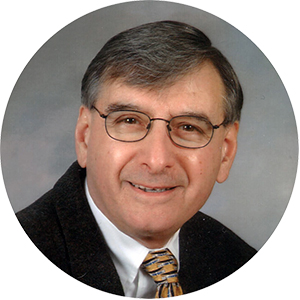Professor Emeritus/Donor Spotlight: Rudolph Napodano, MD

Rudolph J. Napodano, MD,
Professor Emeritus, Department of Medicine
When Rudolph “Rudy” Napodano, MD, joined the University of Rochester as a faculty member in 1967, he was eager to continue a career in teaching. He came from St. Mary’s Hospital, where he was involved in a working group with Dr. Lawrence Young to initiate the Associated Hospitals Program (AHP), an innovative city-wide residency for internal medicine which engaged the staff, patients, and facilities of six hospitals and selected community health centers and private practices. Previously, Napodano had started out in private practice, but greatly missed the teaching component of his fellowship and residency years. At URMC, in 1978 he was appointed Director of the AHP and joined the general medicine unit under Dr. Paul Griner. He began working with residents and medical students at Strong, while continuing to work with the AHP. It was in teaching that Napodano found the maturation of all his interests, and he was in that position until 1993 when he retired. He shares, “What I discovered is that residents often teach faculty more than faculty teach residents. They keep us up to date with the cutting edge of our discipline. Teaching, working and learning directly with medical students, residents and faculty was very rewarding for me.”
Over the years, Napodano has watched the field of primary care change dramatically, making practice more difficult. With most of the work up being done in an ambulatory setting, an internist needs depth as well as breadth in knowledge, clinical and technical skills. “The quality of a differential diagnosis can prevent a patient’s serious illness from going undetected,” he says. “Therefore, it is essential to have faculty who think that way, who broaden out the differential at the time they are seeing a patient with the resident. After observing the resident with a patient, a faculty member can come out of the room and expand the resident’s perspective of the encounter.” Napodano stresses how critical it is that this be done in a way, “that stimulates and encourages the resident’s critical, clinical thinking regarding the case in question.”
Napodano thinks back fondly on that important bond of mentorship between faculty and residents. “Residency is like a family,” he says. “Faculty who assume a mentor’s role are not only effective in teaching but in genuinely caring about each resident as an individual human being, as each comes through an intense educational environment. Remembering his own role models, in medical school and fellowship he worked directly with a senior faculty person who in many ways shaped his thinking on a teaching career. As a faculty member at URMC, Napodano reflects on how supportive Dr. Bill Morgan and Dr. Lawrence Young were. “Both were very caring, and receptive if someone had a concern. I tried to emulate that,” he says.
Dr. Brett Robbins, the current program director of the Med-Peds Residency Program, recognizes that “Rudy Napodano’s values still exist here at URMC – that plain kindness and the effort to be psychologically conscious. A lot of the innovation in education starts here in this department. Alumni share that their training has prepared them incredibly well for their careers. They are hitting the mark for what Rudy started.” Robbins shares that he himself still teaches current residents about “The Rudy 3,” a method for slicing a differential diagnosis.
After he retired, Napodano considered how he might put some of his earnings toward supporting primary care education at URMC. He and his wife started the Rudolph and Carol Napodano Endowment fund to continue the intent of the graduates who began this initiative in 1993, to support a seasoned practitioner working with residents in a clinical practice setting. “We wanted to amplify the program, and that’s how the endowment came about,” he says. “It’s been a great way to bring other donors in. Residents in the AHP-PCPIM and the Med-Peds program are devoted to their practice. Each generation of doctors builds upon our support for an effort like this. “Since I have been successful, it’s important to me to support the education of medical students and residents who express an interest in practicing primary care internal medicine or medicine-pediatrics.”
Dr. Marc Berliant, medical director of the faculty-resident internal medicine practice at Strong Memorial Hospital says that, “Rudy Napodano continues to be an inspiration to generations of medical residents interested in pursuing careers in primary care. The Rudy Napodano Teaching Fellowship is awarded annually to a Clinician Educator in the Department of Medicine who enhances our educational programs. Each awardee follows Napodano’s tremendous example.”
As far as his advice for current trainees, Napodano stresses the need to be driven and always looking for ways to build their knowledge and the clinical and technical skills needed to be a successful practitioner.